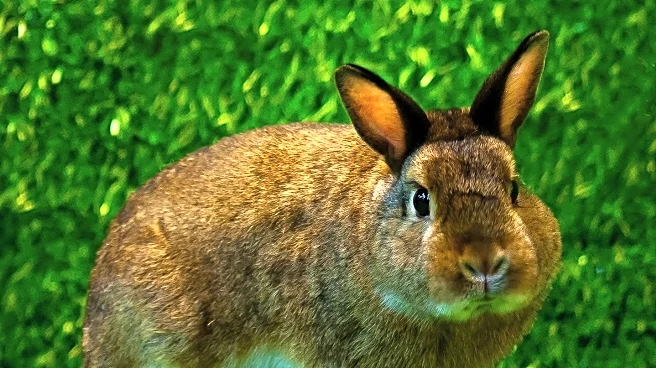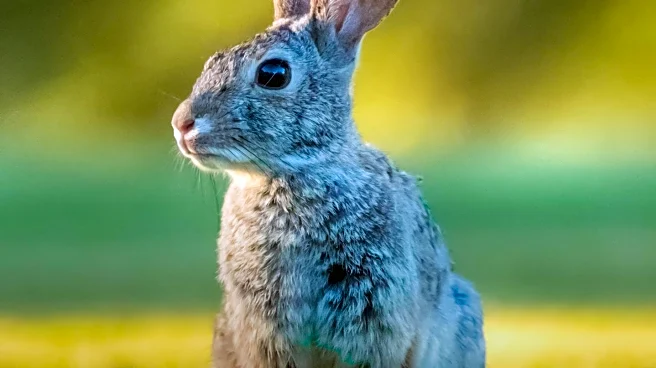What is the story about?
What's Happening?
In northern Colorado, cottontail rabbits have been observed with unusual growths resembling tentacles and horns on their faces. These growths are caused by the rabbit or Shope papilloma virus, a condition that is relatively common among rabbits. According to Colorado Parks and Wildlife, the virus is spread through direct contact or via biting insects such as fleas and ticks. While the appearance of these growths may be alarming, they are generally not harmful to the rabbits unless they interfere with essential functions like eating or drinking. Most rabbits recover from the virus without any long-term effects. The virus does not pose a threat to humans or other pets, although it can affect domestic rabbits more severely. Pet owners are advised to seek veterinary care if their rabbits show symptoms of the virus.
Why It's Important?
The emergence of the Shope papilloma virus in Colorado's rabbit population highlights the importance of wildlife health monitoring and public awareness. While the virus itself is not a direct threat to humans, it serves as a reminder of the interconnectedness of ecosystems and the potential for wildlife diseases to impact domestic animals. The situation underscores the need for pet owners to be vigilant about their pets' health and to take preventive measures against diseases that can spread from wildlife. Additionally, the attention drawn by the unusual appearance of the affected rabbits has sparked interest and concern, leading to increased public engagement with wildlife health issues.
What's Next?
Colorado Parks and Wildlife will likely continue to monitor the situation and provide updates as necessary. Pet owners in the region may take additional precautions to protect their domestic rabbits from potential exposure to the virus. Public interest in the story may lead to further educational efforts by wildlife officials to inform the community about the virus and other wildlife health concerns. As the story gains traction, it may also prompt discussions on broader wildlife management and conservation strategies.
Beyond the Headlines
The unusual appearance of the rabbits has captured public attention, highlighting the role of media in shaping perceptions of wildlife health issues. This case may lead to increased interest in the study of wildlife diseases and their implications for both animal and human health. It also raises questions about the impact of environmental changes on wildlife and the potential for new or emerging diseases to affect ecosystems.
AI Generated Content
Do you find this article useful?












